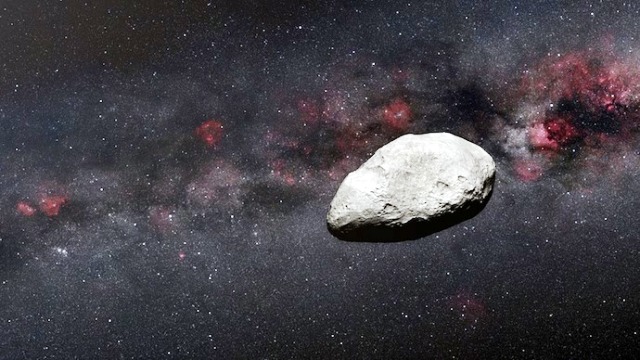Asteroid Named After Indian Scientist Prof Jayant Murthy
The International Astronomical Union (IAU) has bestowed a rare honour upon Indian scientist Professor Jayant Murthy by naming an asteroid after him. The IAU, responsible for naming small objects in the Solar System, announced this honour through its Working Group on Small Bodies Nomenclature.
The asteroid, previously catalogued as 2005 EX296, now officially bears the name (215884) Jayantmurthy. It is discovered by MW Buie at the Kitt Peak National Observatory in Arizona, USA, in 2005 and orbits the Sun between Mars and Jupiter approximately every 3.3 years.
Upon hearing the news, Professor Murthy expressing his gratitude and excitement said, “I am thrilled to have an asteroid named after me, in connection with my work on the NASA New Horizons Science Team to observe the ultraviolet background radiation in the Universe.”
Director of IIA, Prof. Annapurni Subramaniam termed the asteroid naming “a very rare honour.” This accolade places him alongside former IIA directors, Prof MK Vainu Bappu and Prof JC Bhattacharyya, who have also been commemorated with asteroids bearing their names
Prof Murthy’s former student Joice Mathew who is currently at Mt Stromlo Observatory in Australia, said: “This recognition is undoubtedly well-deserved,” adding that everyone who knows Prof. Murthy must be “thrilled to know that there’s now a ‘Jayantmurthy’ up in the sky.”
About Professor Murthy
Professor Murthy, who retired from the Indian Institute of Astrophysics (IIA) in 2021, served as the acting Director of the institute from July 2018 to October 2019. He is renowned for his contributions to the fields of interstellar medium, ultraviolet astronomy and space missions. His invaluable research has significantly advanced our understanding of the universe, particularly through his involvement with NASA’s New Horizons Science Team. Their efforts to observe ultraviolet background radiation have expanded our knowledge of cosmic phenomena.
This naming honours Professor Murthy’s vital role in the New Horizons mission, where he studied ultraviolet background radiation in the far reaches of the Solar System, beyond the Sun’s interference and the interplanetary medium.

What is the New Horizons mission?
Departing from Cape Canaveral, Florida, USA, aboard an Atlas V rocket, the New Horizons spacecraft embarked on its journey on January 19, 2006. Its primary mission was to investigate Pluto, a task it accomplished in 2015 after traversing space for nine years. Following this, the mission’s focus shifted, leading New Horizons to the remote Kuiper Belt Object (KBO), Arrokoth, in early 2019. Currently, the spacecraft is venturing into the farthest expanses of the Solar System. Equipped with an advanced array of scientific instruments, including the Alice ultraviolet spectrometer, New Horizons continues its exploration.



Comments are closed.